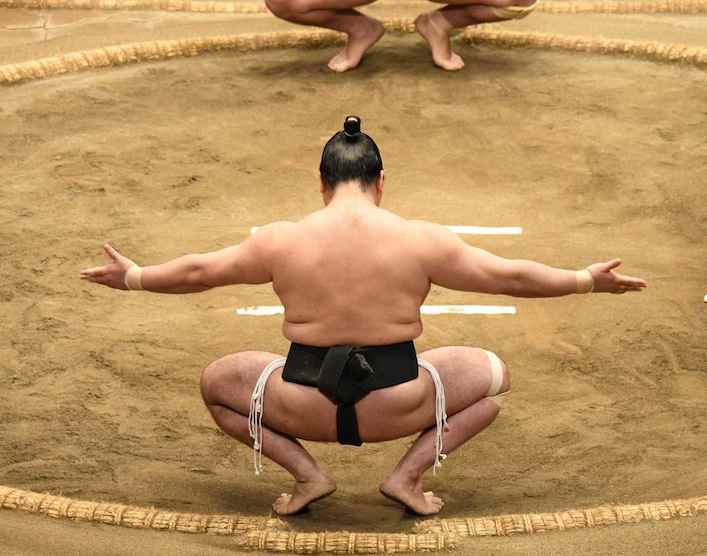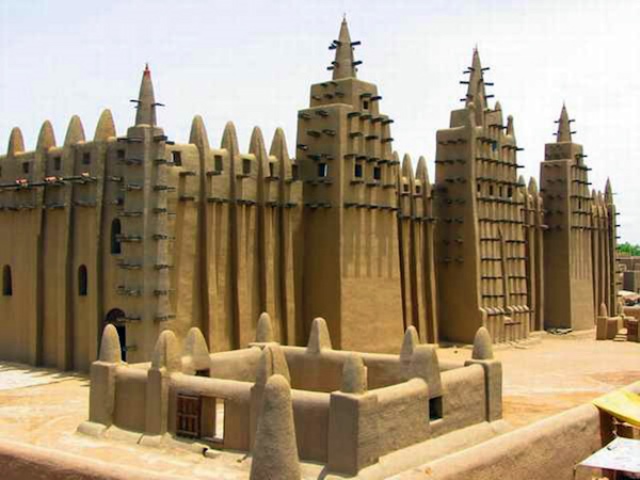Last Updated on January 23, 2023
Elegance personified. A love symbol. And a world wonder. Prepare to be awestruck as we take you on a journey to one of the world’s most iconic and breathtaking structures -The Taj Mahal!
Nestled on the banks of the Yamuna river in the historic city of Agra, India, this mausoleum is a true architectural marvel. It is a symbol of love that has stood the test of time.
The Taj Mahal is now a UNESCO World Heritage Site. It was built by Mughal Emperor Shah Jahan in memory of his beloved wife, Mumtaz Mahal, who died during childbirth in 1631.
It is a masterpiece of white marble, adorned with intricate carvings and precious inlaid stones. This architectural wonder is not just a testament to the love story of Emperor Shah Jahan and his wife. But also a reflection of the Mughal Empire’s artistic and architectural achievements.
The Taj Mahal stands as a symbol of love, devotion, and beauty that has captivated the hearts of millions of visitors worldwide, including the Royal Family. Have you ever wondered what the structure is all about? Come and experience the grandeur and elegance of one of the new seven wonders of the world
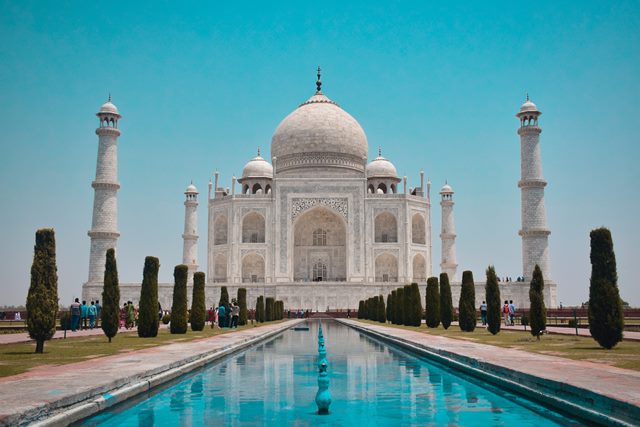
Who Built the Taj Mahal and Why?
Shah Jahan commissioned the Taj Mahal in 1631 to be built in memory of his wife, Mumtaz Mahal. She died on June 17, 1631, while giving birth to their 14th child, Gauhara Begum. The mausoleum was completed in 1648, while the surrounding buildings and garden were completed five years later.
Who Owned the Land the Taj Mahal Is Built?
Although an emperor, Shah Jahan could not initially get land for the Taj Mahal project. However, he could have used one of the many lands he owned. But after studying them, he decided that none matched what he was looking for.
Then, he decided to purchase it from Raja Jai Singh of Ajmer, Rajasthan, who owned a piece of land on Yamuna’s edge. Raja Jai Singh sold it to the emperor in exchange for four Havelis (houses) in Agra.
After acquiring this land, the emperor then proceeded with the project.
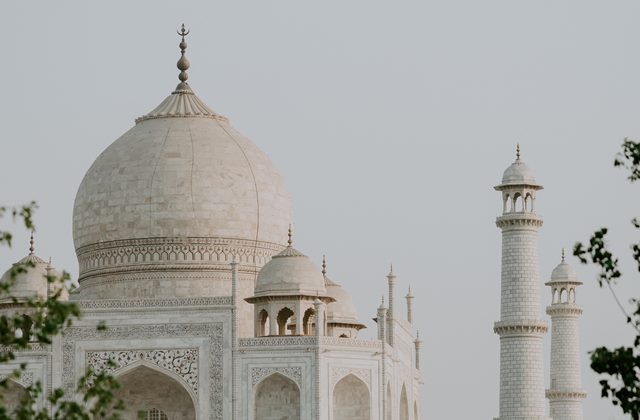
Read: The 7 Most Influential African Empires
Architecture and Design
The mausoleum sits in the center of a wide plinth 23 feet (7 meters) high. It is made of white marble that reflects different colors depending on the intensity of sunlight or moonlight.
It has four nearly identical facades, each with a wide central arch that rises to 108 feet (33 meters) at its apex and chamfered (slanted) corners with smaller arches. The majestic central dome, which stands 240 feet (73 meters) tall at the tip of its finial, is surrounded by four smaller domes.
The main dome’s acoustics cause a single note of a flute to reverberate five times. The mausoleum’s interior is organized around an octagonal marble chamber embellished with low-relief carvings and semiprecious stones (pietra dura).
There are cenotaphs for Mumtaz Mahal and Shah Jahan there. The false tombs are surrounded by a finely crafted filigree marble screen. In addition, the true sarcophagi are beneath the tombs at the garden level. Elegant minarets stand gracefully away from the central building at each of the square plinth’s four corners.
The mosque, which faces east, and its jawab, which faces west and provides aesthetic balance, flank the mausoleum near the northwestern and northeastern edges of the garden, respectively.
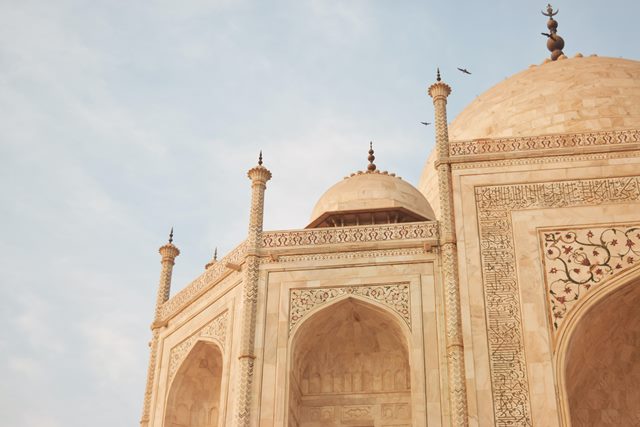
Built of red Sikri sandstone with marble-necked domes and architraves, they contrast in both color and texture with the white marble of the mausoleum.
Verses from the Quran were inscribed in calligraphy across numerous sections of the Taj Mahal under the direction of Amnat Khan al-Shrz. Daybreak (89:28-30), one of the inscriptions in the sandstone gateway, invites the faithful to enter paradise.
Calligraphy also encircles the mausoleum’s soaring arched entrances. To ensure a consistent appearance from the terrace’s vantage point, the lettering grows in size in proportion to its relative height and distance from the viewer.
Where Is the Taj Mahal Located?
The Taj Mahal is located in the city of Agra, 176 kilometers from New Delhi, the capital. It is situated on the banks of the Yamuna River. This is 3 kilometers from the city center and its main train station.
This monument is similar to the pyramids of the Giza in Egypt, which are also on the outskirts of Cairo. The Taj Mahal’s GPS coordinates are 27° 10’30.05″ North and 78° 2’31.76″ East.
Read: Facts About Ancient Egyptians That European Colonialism Has Misconstrued
Interestingly, the location was not chosen at random. Rather, it met several criteria. First, we know that it is located east of Agra. This is mainly because the entire area was made up of Mughal gardens and high dignitaries’ residences. The area also featured various palaces during the reign of Shah Jahan in the seventeenth century.
Also, knowing that gardens correspond to a divine concept in Islam, this environment was ideal for constructing an empress’s tomb.
Then there were the banks of the Yamuna, a tributary of the Ganges. But in Hinduism, the Ganges is the purifying river, where the deceased’s ashes are poured out to purify their souls.
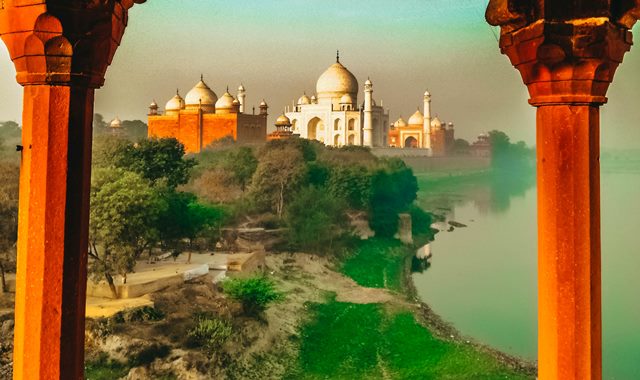
To build an Imperial tomb on the banks of the Yamuna means to believe that the river’s waters will flow into the Ganga and purify the Empress’s soul.
What Is So Special About the Taj Mahal?
The Taj Mahal has become a prominent image associated with India, thus becoming a symbol of the Asian country itself. It has received global attention, attracting millions of visitors.
Along with being a well-known symbol of love, the Taj Mahal also represents Shah Jahan’s wealth and power. It highlights how the empire prospered during his reign.
Rulers have used bilateral symmetry dominated by a central axis to symbolize a ruling force that brings balance and harmony. And Shah Jahan used that concept in the construction of the Taj Mahal.
Additionally, the plan is aligned in the cardinal north-south direction. And the corners have been placed so that the sun can be seen rising and setting on the north and south corners on the summer and winter solstices, respectively, when viewed from the center of the plan.
As a result, the Taj serves as a metaphorical horizon.
The Taj Mahal’s planning and structure, from the building itself to the gardens and beyond, is symbolic of Mumtaz Mahal’s mansion in the Garden of Paradise. The Gardens of Paradise concept is carried over into the mausoleum construction.
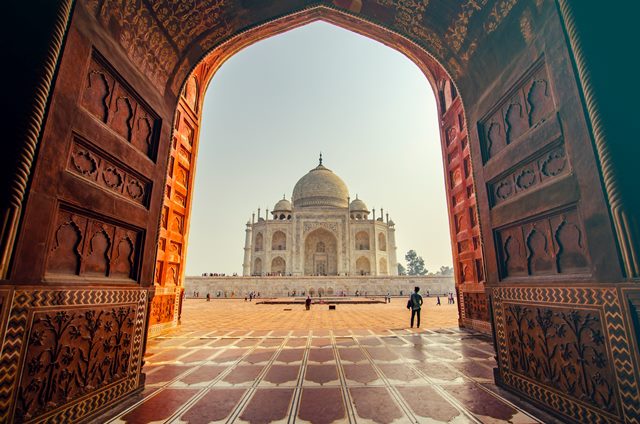
Colorful vines and flowers adorn the interior, which is filled in with semi-precious stones — using a technique known as pietra dura, or Parchin Kari as the Mughals called it. The color of the building appears to change slightly depending on the time of day and weather.
That’s not all.
The sky has been incorporated into the design not only through the reflecting pools but also through the surface of the building itself. This is another way they used to imply divine presence at the site. Lastly, the Taj is also regarded as a feminine architectural form, and it is said to represent Mumtaz Mahal herself.
Read: 7 Female Warriors Who Led African Armies and Empires
The Current State of the Taj Mahal
The Taj Mahal has suffered from neglect and decay over the centuries. At the beginning of the twentieth century, Lord Curzon, the British viceroy of India at the time, oversaw a major restoration project.
But more recently, air pollution from nearby factories and exhaust from motor vehicles has harmed the mausoleum, particularly its marble facade. Some measures have been implemented to reduce the threat to the monument.
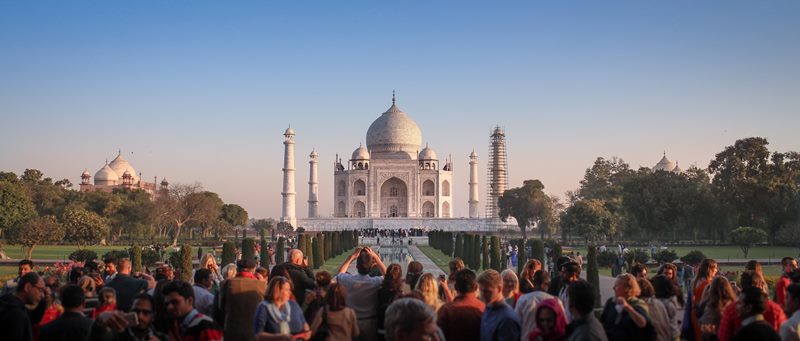
This included the closure of some foundries and the installation of pollution-control equipment at others, the creation of a parkland buffer zone around the complex, and prohibiting nearby vehicular traffic.
In 1998, the Taj Mahal restoration and research program were launched. However, progress in improving the environmental conditions surrounding the monument has been slow.
The Taj Mahal has also been affected by India’s political dynamics on several occasions. Night viewing was prohibited between 1984 and 2004 due to concerns that the monument would become a target for Sikh militants.
Furthermore, it is increasingly being regarded as an Indian cultural symbol. Some Hindu nationalists have attempted to downplay the importance of Muslim influence in explaining the Taj Mahal’s origins and design.
Before you go…
Hey, thank you for reading this blog to the end. I hope it was helpful. Let me tell you a little bit about Nicholas Idoko Technologies. We help businesses and companies build an online presence by developing web, mobile, desktop, and blockchain applications.
We also help aspiring software developers and programmers learn the skills they need to have a successful career. Take your first step to becoming a programming boss by joining our Learn To Code academy today!
Be sure to contact us if you need more information or have any questions! We are readily available.








